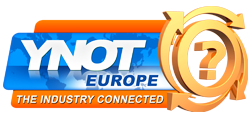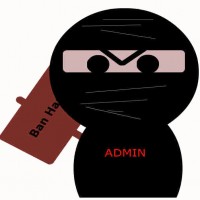What is a Balance Sheet?
Large or small – the Balance Sheet is a snapshot of your financial position at a particular moment in time (the reporting period). It shows what your business owns, what it owes to others, and its equity (owner/stockholder investments & the company’s P&L). This is normally the report that banker’s want to look at first when you apply for a loan. No matter the size of your firm, I urge you to know your Balance Sheet!
Ok, what does that mean?
The balance sheet numbers MUST balance using the formula assets = liabilities + equity AND the totals on your balance sheet reflect the life of your business, the numbers continue on from year to year, they don’t start fresh each year.
Balance Sheet Assets shows what your company owns. The Assets are normally broken down by Bank Accounts, Accounts Receivable, Current Assets, and Fixed Assets. A business normally runs the report at the end of the month, quarter and year. As a business owner you should know these numbers & what they mean, these are items that represent “cash” to your business.
When you look at the Asset – Bank Accounts area of your balance sheet you will likely notice that the balance sheet balance and your bank statement balance will be different. Remember, the bank statement shows transactions that have cleared while your check register shows all transactions, both cleared & uncleared.
When you look at the Asset – Fixed Assets Account area it shows the fixed assets at their original cost. In order to keep the Balance Sheet “clean” the information is summarized (i.e., Office Equipment-Purchases; Furniture & Fixtures) on the Balance Sheet. The depreciation is then posted separately (accumulated depreciation-fixed asset).
The Liabilities on the Balance Sheet are your Accounts Payable (amount you owe vendors), Credit Cards, Loans and Sales Tax. These are very important numbers because this is what you OWE & it’s important to keep an eye on these so you can control your debt.
The Equity Account shows what the owner has put into the business, taken out of the business and some Balance Sheets show Personal funds used to pay business expenses. The equity accounts section may vary depending on the type of business entity you have (i.e., S-Corp, Partnership, LLC, etc.).
Some items to keep in mind, if you prepay any of your expenses these should be on your Balance Sheet – this is a Current Asset to your business. As an example, if you pay your $1,200 insurance bill that covers September 2010 thru August 2011 in August 2010 then the $1,200 should show up as Prepaid Expense in August 2010 and a Journal Entry should be made each month, beginning in September 2010 moving $100 from the Prepaid Expense account to the Insurance account so the expense will then be on your Profit & Loss Statement.
Depending on the accounting software you use, when you invoice your clients this amount will be on the Accounts Receivable line of the balance sheet. If you do not apply the payments to the invoice and make a deposit your balance sheet will be wrong. You will overstate your income (entered once as A/R and once as a deposit). It is VERY important to make sure you apply your income correctly. A good check is to run a copy of your A/R weekly and a minimum of each month!
Your bank accounts need to be reconciled EACH month – you risk thinking you have to much money if you forget to enter debit card transactions, checks or have entered any transactions in error. This includes your Petty Cash – you should put receipts in your petty cash box so at the end of each week or month the accounting software is updated.
Make sure you are reviewing inventory on a regular basis otherwise you risk over or understating the value of what you have in your warehouse.
When you purchase equipment, I normally suggest items in the $500 to $1,000 range should be added to Equipment Purchases and not office supplies. If you use a program like QuickBooks you should itemize the equipment, include the serial number and then tie the item to the Equipment Purchases account. The same technique is used for furniture, fixtures, and vehicles. The accumulated depreciation is also applied to the above noted categories.
Your accounts payable should be items you owe vendors, not credit card or loans. Your vendors may include your landlord, utilities, telephone, cell phone, etc. Your credit card & loan liabilities should be split out – the credit cards are a current liability while most loans are a long term liability. As you pay these your payment should be applied to the loan balance & the interest is added as an expense, this will show up on your P&L. These items should be reconciled each month, just like your bank statement. If you collect sales tax this is also a liability account because it’s not your money to keep, it has to be paid by a certain day to the state/local agency.
Finally the equity is broken out by what the owner has contributed and what they’ve drawn from the business. You will also see retained earnings which are an accumulation of the profit or loss (the activity is closed out each year) since the business began.
I hope that I have helped you understand the importance of the balance sheet.
Accountingxxx is a U.S. based accounting firm that specializes in the adult entertainment industry. If you need assistance simply go to our website [url]www.Accountingxxx.com[/url] and fill out the contacts page and someone will be happy to help you.
Comments are closed.


